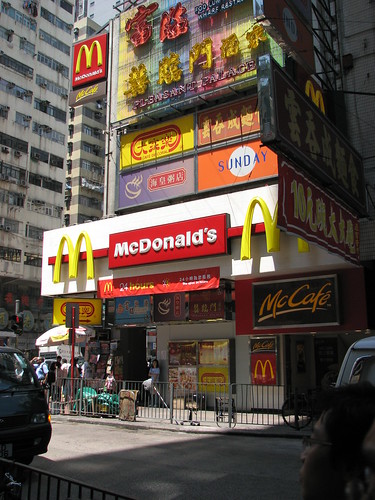
Dai Pai DongThese shoddy, alfresco food stalls are a true local phenomenon, celebrated by diners for their quick and cheap, no-frills dishes. Despite their popularity, dai pai dongs are also a vastly endangered species and there are only 28 licensed stalls still operating in the city. Sham Shui Po houses most of the remaining dai pai dongs, including Cheung Fat (beef brisket noodles and pig trotters), Keung Kee (killer stir-fries) and So Kee (fluffy pork chops). A good chunk of these open-air stalls can also be found in Central, such as Sing Heung Yuen (tomato broth noodles) and the handful of recently renovated stalls that line Stanley Street.
Airplane roast goose, Maxim’s MXYung Kee may have started the trend, but Maxim’s are the ones who’ve perfected the carry-on poultry idea. Place your order at least three days in advance at any MX outlet then, on the day of your flight, pick up your ordered goose from the Maxim’s Food² at the airport. The goose is freshly roasted and is packaged to be 100 per cent travel-safe (roast goose sauce and plum sauce included). The goose is even prepped with its own boarding pass. This goose is ready to fly.
Roast pig, Wing HingCrispy, blistered skin. Succulent meat perfumed with the fragrant smell of firewood. It’s not easy to get suckling pig like that these days. Thankfully, Wing Hing’s owner Mr Li sticks by age-old tradition and insists on using firewood to roast their pork. The roasting factory (pictured, left), which has been in operation for more than 40 years, is fitted with three large underground roasting pits. Each pit measures about 2-metres deep and reaches over 200-degrees when fired up. Every morning, Li takes up a fresh batch of suckling pigs, brushes them down with molasses, and lowers them into the fiery ditch. The pigs need to be taken out, rested, and re-roasted several times. The complete process of roasting a single pig takes two to three hours and the job is much more labour intensive than with a gas or electric fire. But the results justify the hard work. Wing Hing’s traditional suckling pig is sold at their fresh meat stall in Tuen Mun, and is also offered at various roast meats specialists around town, including Luen Fat.

























